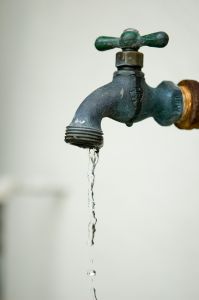Due to a long history of pollution regulation and filtration, clean and drinkable water rushes out of the faucets in homes of most Americans every time the handle is turned. In fact, most people do not even think about where the water is coming from because of a long-established trust with local municipalities. But it turns out the water entering and leaving our sinks may not be as safe as previously assumed thanks to tiny micropollutants that are byproducts of materials like pharmaceuticals, cleaning supplies, and beauty products.
In the late 1900s, micropollutants were discovered in drinking sources and natural oceans, lakes, and rivers. A micropollutant is an extremely small, hazardous contaminant that poses a threat to environmental ecosystems and human health. The micropollutants are so small that they can travel through the current filtration systems with ease. They are found in concentrations so minor that the data is recorded in micrograms per liters, but each particle has the capacity of being destructive because of the chemical make-ups. Common micropollutants that are sneaking through filtration undetected are pesticides, flame-retardants, plastics and surfactants, pharmaceuticals, and personal care products, as outlined in Treatment of Micropollutants in Water and Wastewater.
Although micropollutants were discovered in the late 20th century because of an improvement in chemists’ analytical technology, they have been a problem for centuries. Once humans started transporting water for easy accessibility in towns and communities, the wastewater produced contained micropollutants. In fact, ancient civilizations, such as the ancient Romans, fell due to improper water cleaning.
Brian Fagan, author of Elixir: A History of Water and Humankind, writes extensively about the history of water transportation, paying particular attention to the rise and fall of the ancient Roman civilization. The ancient Roman civilization was one of the first to apply a pumping system in order to relieve themselves of the burden of having to be downstream from a water source. Previously, humans were dependent on rainfall and natural water flow to survive. While water was considered precious and communities were formed around natural water sources throughout history, modern pumping systems have revolutionized water transport, therefore giving people the freedom to live where they want, regardless of proximity to natural water sources.
The Romans were the first to drastically shift the natural landscape with aqueducts and pumps in order to indulge human needs. Additionally, they had above ground draining systems to remove used water. Although this water transportation was clearly a huge step for mankind, the above ground sewage draining system encouraged disease and infestation to wreak havoc, which ultimately lead to the fall of the empire. Since then, people have made bigger strides to clean water before and after use to prevent the spread of disease and bacterial infections. These efforts to clean water were thought to have been effective until the recent discovery of micropollutants.
So where does the water go once it goes down the drain in order to prevent the same mistakes from happening as the Romans? Used water in the United States goes through a water treatment facility, as outlined in “Pharmawater” by the Associated Press. For example, once someone flushes his or her toilet, the water goes to a sewage treatment plant. These wastewater plants are designed to kill any bacteria that can cause diseases. Actual treatment varies, but typically the water is filtered by physical methods. First the water is allowed to sit so that solid, denser particles can sink to the bottom. Once these larger contaminants are removed through separation, the water is filtered. One particularly common filtering method is to flow water through sand. Finally, chemicals, such as chlorine, are added in order to kill the bacteria and any microorganisms that may have gotten through all of the filtration steps. This last step is the huge difference between modern civilizations and the ancient Romans and is important for ensuring that water is not the source of disease spreading in the United States. The final product is clean water that can be redistributed to natural lakes, rivers, and streams… Or is it?
Micropollutants are not being filtered out using the standard purification methods. These micropollutants do not pose a particularly grave threat alone, but together the sum of the parts is greater than the whole. For example, Dr. Sherri Mason found that microscopic plastic beads used as facial exfoliates are ending up in the Great Lakes and harming the digestive system of fish. In a study entitled “Assessment of toxic effects of triclosan on the terrestrial snail”, scientists discovered that a byproduct of antibacterial hand sanitizer and soaps could form dioxins, which are extremely toxic to plants and animals. Also, pharmaceuticals can be secreted or discarded by patients, which results in loose anti-inflammatory drugs, anticonvulsants, lipid regulators, and antibiotics in water sources. According to Treatment of Micropollutants in Water and Wastewater, up to 28 percent of oral medicine is excreted from the body unchanged and can end up in water. A variety of contaminants at low concentrations have the potential to react with each other and create toxic environments for both marine organisms and humans.
Ultimately, micropollutants, although small, pose a big threat to both the environment and human health. In order to avoid a devastating effect on society from water contamination by micropollutants, humans need to be more aware of what they are putting in the water. While scientists research the effects of micropollutants and how to remove them, consumers must start to make changes and purchase cleaner, less pollutant products.
